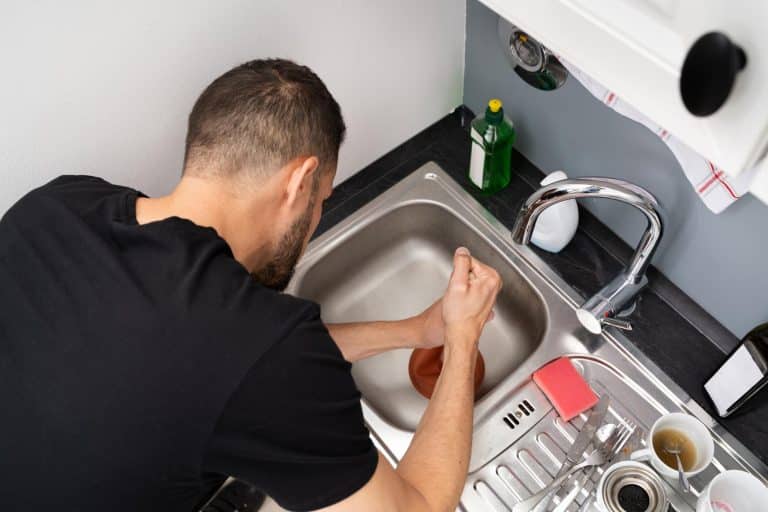Drains often get blocked, and it’s usually at the most inconvenient of times. Be it during washing dishes or taking that relaxing shower after a long day, a blocked drain can cause an undue pause on your activities, leaving you frustrated and even anxious. This prevalent household issue not only disrupts daily life, but can also escalate into severe plumbing problems if overlooked or improperly addressed. The irritation, mess, and potential expense make this an issue you’d undoubtedly prefer to avoid or address promptly.
The purpose of this article is to enlighten you about the various reasons your drains become blocked, potent ways to spot a potential blockage before it escalates into a problem, and practical DIY solutions for tackling such issues. At its core, this comprehensive guide seeks to empower homeowners with key knowledge and skills to efficiently handle blocked drains, thereby saving time and potentially a lot of money.
Understanding why your drain keeps clogging is an important first step in effectively combating this common problem. By identifying the culprit behind blocked drains in your home, you’d be able to promptly tackle any incidents and prevent future occurrence. Essentially, the goal here is to ensure that you can confidently keep a seamless plumbing system and swerve the costly alternative, which is drain repairs or worse, pipe replacements.
Common Causes of Drain Blockages:
Regular inspections and cleaning are undeniably pivotal, but sometimes even this conscientious approach can seem fruitless if your drains keep clogging. So, why does this happen? Exploring the common causes of drain blockages will significantly equip you to address and prevent such incidents. While no two situations are exactly identical, the villains are often the same.
Whenever showers, baths, or bathroom sinks become blocked, hair is often the prime suspect. Hair strands swirl down our drains daily, and over time, these strands clump together inside the drain, often forming a net-like structure when they combine with sticky substances such as soap and form tenacious clogs. As innocuous as it seems, hair is one of the most common culprits for bathroom drain clogs. Cleaning your bathroom drains of loose hair on a regular basis goes a long way in mitigating issues relating to hair blockages.
In the precinct of the kitchen, the common culprits for blocked drains are typically grease and food particles. When hot, cooking fat may seem harmless due to its liquid form. But it becomes problematic when it cools down within the pipes. It solidifies and lines the pipe walls, causing obstructions over time. Along with grease, food particles often accumulate in our pipes, adding to the problem significantly, more so if your sink lacks an effective waste trap or strainer to sieve out these particles. Proper disposal of grease and thorough washing off of food remnants from plates and pots before cleaning can help prevent grease and food particle-induced drain blockages.
Foreign objects of various types can also cause obstructions. In bathrooms and kitchens alike, items such as cotton swabs, small children’s toys, jewellery, food packaging, and even an occasional lost utensil sometimes end up down our drains unintentionally. It is important to always double-check your sink and shower areas to prevent foreign objects from springing a drain blockade surprise upon your household.
Beyond these common culprits, there are other, perhaps less conspicuous factors that cause drains to clog. Soap scum is a prevalent cause of blockages. Soap’s fatty acids can bind with minerals in hard water, leading to a dense, sticky residue lining your pipes and promoting the building of clogs. Mineral build-up can also cause issues over time. When minerals dissolve in water, they can re-solidify as insoluble masses, which can create scale build-up inside your pipes that narrows the passage for water to pass through, leading to blockages. Consider using water softeners and biodegradable soaps to reduce the frequency of this stubborn residue.
How to Identify a Blocked Drain Early:
With your now vastly improved knowledge of what causes a blocked drain, it’s equally critical to be able to spot the warning signs early. Catching and addressing these signals as soon as they appear can address medium to large-sized problems.
One of the initial signs of a blocked drain is a sink, tub, or shower that no longer drains as speedily as it should. Water that seems to linger around longer than usual after you’ve used the sink or taken a shower is usually a red flag. It could indicate a partial blockage somewhere down your drain that needs prompt attention. Hence, one should always be on the lookout for changes in the speed of drainage in sinks and showers.
Another tell-tale sign of a drain blockade is an unpleasant odour. This malodour often emanates from the sink or shower drain and typically smells like rotting organic material. Blockages increase over time due to the accumulation of debris, and this confined heap of organic material begins to decompose, leading to a foul smell. It’s a repugnant indicator that you have a growing problem down your drain.
Gurgling sounds from your drains might elicit a chuckle from children, but for an adult homeowner, it is a cause for concern. These unusual noises are another important sign of a blocked drain. Gurgling noises occur when air trapped in the pipes is displaced and forced through the water in your drains in an attempt to escape. If you find your drain sounding like a little brook splashing against rocks, it may well be time to investigate further.
A visual inspection for disruptions, visible debris, or standing water around your drains can also be indicative of a blockage. Overflowing water, for instance, could be evidence of a severe blockage, implying that the exit pathway for the water has been completely blocked and the water now has nowhere else to go.
DIY Methods to Unblock Your Drain:
If you’re someone who prefers to roll up your sleeves and tackle the problem head-on, that’s great! There are several DIY methods to unblock drains, and they can prove successful in many cases, saving you money that would have gone towards a plumbing service.
The plunger, an inexpensive tool available in most homes, might just be your first line of defence against a blocked drain. When dealing with a stubborn stoppage, the suction force that the plunger creates can often dislodge the impediment and restore the free flow of water. Using a plunger is pretty straightforward, but it’s important to note that alternate openings such as overflow outlets and second sink drains should be sealed off to maximise the effectiveness of the suction.
Besides the plunger, a potent combination of baking soda and vinegar acts as an effective and natural alternative to commercial drain cleaners. Here’s how to do it: pour a pot of boiling water down the drain, followed by half a cup of baking soda. Give it a few minutes to work, then add a cup of vinegar mixed with a cup of very hot water. Cover the drain to keep the bubbles working in the drain. After about 15-20 minutes, rinse with another pot of boiling water. The effervescence of this concoction can often dislodge minor blocks effectively.
For blockages that a plunger or a solution of vinegar and baking soda cannot dislodge, owning a drain snake or auger becomes handy. These tools are specifically designed to reach into pipes and mechanically disrupt the blockage and remove or break it apart, allowing it to pass through the system. Using a drain snake effectively does require some basic knowledge, so it is worth checking out a guide or speaking with an expert before attempting.
In some cases, chemical drain cleaners may be necessary, but they should only be used as a last resort. These chemicals are not only strong but also potentially hazardous to both your health and the environment when not handled properly. Not to mention, they can lead to corrosion and damage over time. Therefore, it’s crucial to follow the manufacturer’s instructions and to always employ the necessary safety precautions when handling these products.

When to Call a Professional Plumber:
Despite your best efforts, there are times when the blockages in your drain defy DIY methods to the point where seeking the assistance of a professional plumber becomes inevitable. For a persistent blockage that’s defying your home remedies, a straightforward fix may not be an option. This defiance could be indicative of a deeper-seated problem that requires professional assessment. Trying to tackle these problems aggressively using at-home methods may be fruitless and risk damaging your plumbing hardware, leading to even more expensive repairs down the line.
Professional plumbers not only come with experience and specialist tools but also bring along the benefit of a comprehensive assessment of your home’s overall plumbing health. Recurring blockages often are symptomatic of more extensive structural issues within your plumbing network, which can be spotted and addressed effectively by a registered plumber.
Choosing a reputable plumbing service requires deliberation. It is advisable to look for a service that is licensed and insured, and also offers guarantees on its work. Seek references, read online reviews, and ensure that your chosen service provider meets all these checks. This due diligence can lead to a timely and effective resolution of your drain blockage problem, and prevent you from booking a follow-up visit a few weeks down the line.
Preventive Measures to Avoid Future Blockages:
Prevention, they say, is better than cure, and it is certainly true in the case of drain blockages. Keeping drains clear of obstructions should be an ongoing part of home maintenance.
Investing in a good drain cover or screen can make a huge difference. These are designed primarily to catch potentially problematic debris before it causes trouble down the line. But a drain screen or guard is not a set-it-and-forget-it solution. Over time, they gather a large amount of debris, reducing their effectiveness. Therefore, cleaning these screens becomes an essential part of regular drain maintenance.
Routine cleanings using eco-friendly methods, such as the baking soda-vinegar method already discussed, can keep your drains clear without causing harm to the environment or your pipes. Clean drains are more likely to remain fully operational and less likely to develop blockages.
Supplement your efforts with a professional inspection at fixed intervals – say annually. A trained plumber can spot potential issues before they escalate into noticeable problems, possibly saving you a significant sum in future repairs.
Keeping Your Drains Flowing Smoothly
Knowing about the common causes of drain blockages, being able to identify problems early on and having a few DIY solutions up your sleeve can indeed make your life as a homeowner more pleasant and potentially cheaper. These skills can help maintain a properly functioning drainage system in your home while avoiding the inconvenient disruptions and potentially hefty repair bills that blocked drains usually carry with them.
Applying the tips provided here can help maintain a blockage-free home. As always, preventive maintenance is a crucial element of efficient home management. Regular drain checks, cleaning, and the use of drain covers can go a long way in preventing future clogs and the stress that follows.
Lastly, sharing helps, so if you have further questions or would like to share your experiences battling drain blockages at home. The comment section below could serve as a platform for readers to learn from each other’s experiences, further helping create a community that learns together and grows together. Remember, expertise is not exclusive but accumulative.













